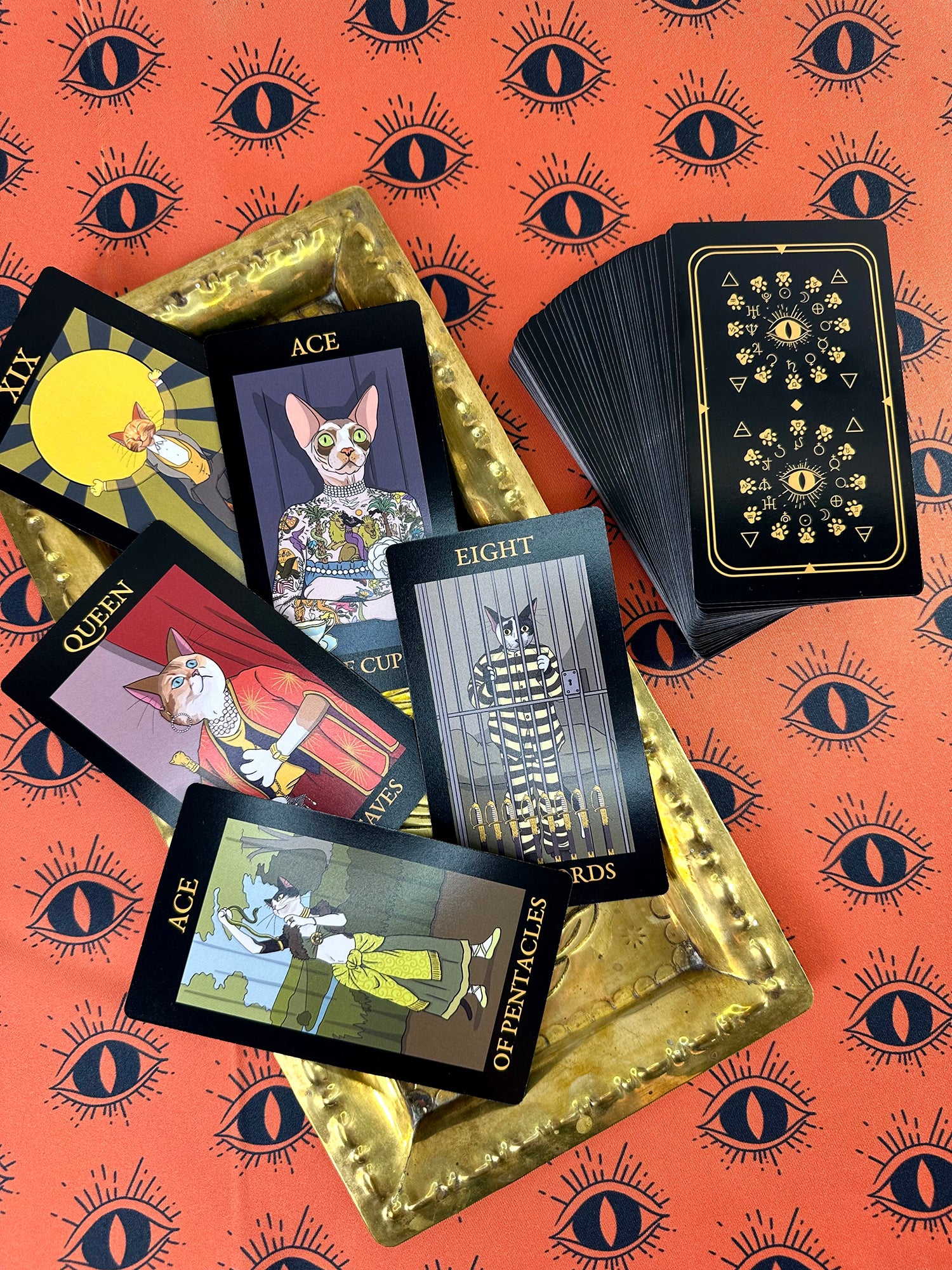
House of Felis, Feline Tarot Deck
Designed and hand-drawn by K Hopkins, each card from the Major and Minor Arcana lovingly reimagined with Victorian and Edwardian cats. Bring a daily practice to your life with a deck that not only helps you tap into your intuition and the spiritual unknown, but also brings a little dark humor into your day.
Is it bad luck to buy your own deck?
There's a widespread misconception out there that buying a tarot deck for yourself is bad luck. It's not entirely clear where this concept came from, but I've done a lot of research, reading the opinions of many tarot readers (amateur and professional). While it is certainly nice to receive a tarot deck as a gift, the experts agree. I have found no accounts from serious tarot users cautioning against buying your own deck. In fact, I think there's something very special in finding a deck that speaks to you and forming a relationship with it all on your own.
Deck Highlights
-
Hand-Drawn Designs
Each card in the deck was hand-drawn on an iPad by me, K Hopkins. Over about a year, I tackled each card, one by one, taking into account the meanings and giving them my own spin. This means that the House of Felis Feline Tarot Deck is truly unique. You won't find another deck using these ideas and interpretations.
-
Shuffles & Spreads with Ease
I shopped around a lot before settling on a company to print my decks. One of my top priorities was to make sure the cards shuffled and spread easily. I always select my cards by spreading them out in a broad fan, faces down. I needed them to spread like butter. And they do! They're printed in the US, by a company in Florida that also printed the booklet and box.
-
Meanings Booklet
Each deck comes with a 43-page guide booklet that has the key words for each card, upright and reversed. There are also pages in the beginning showing some card spreads, so a beginner should be able to start right away, using the information in the booklet. The cards are all standard, so any book or blog on tarot should give you more in-depth meanings if needed.
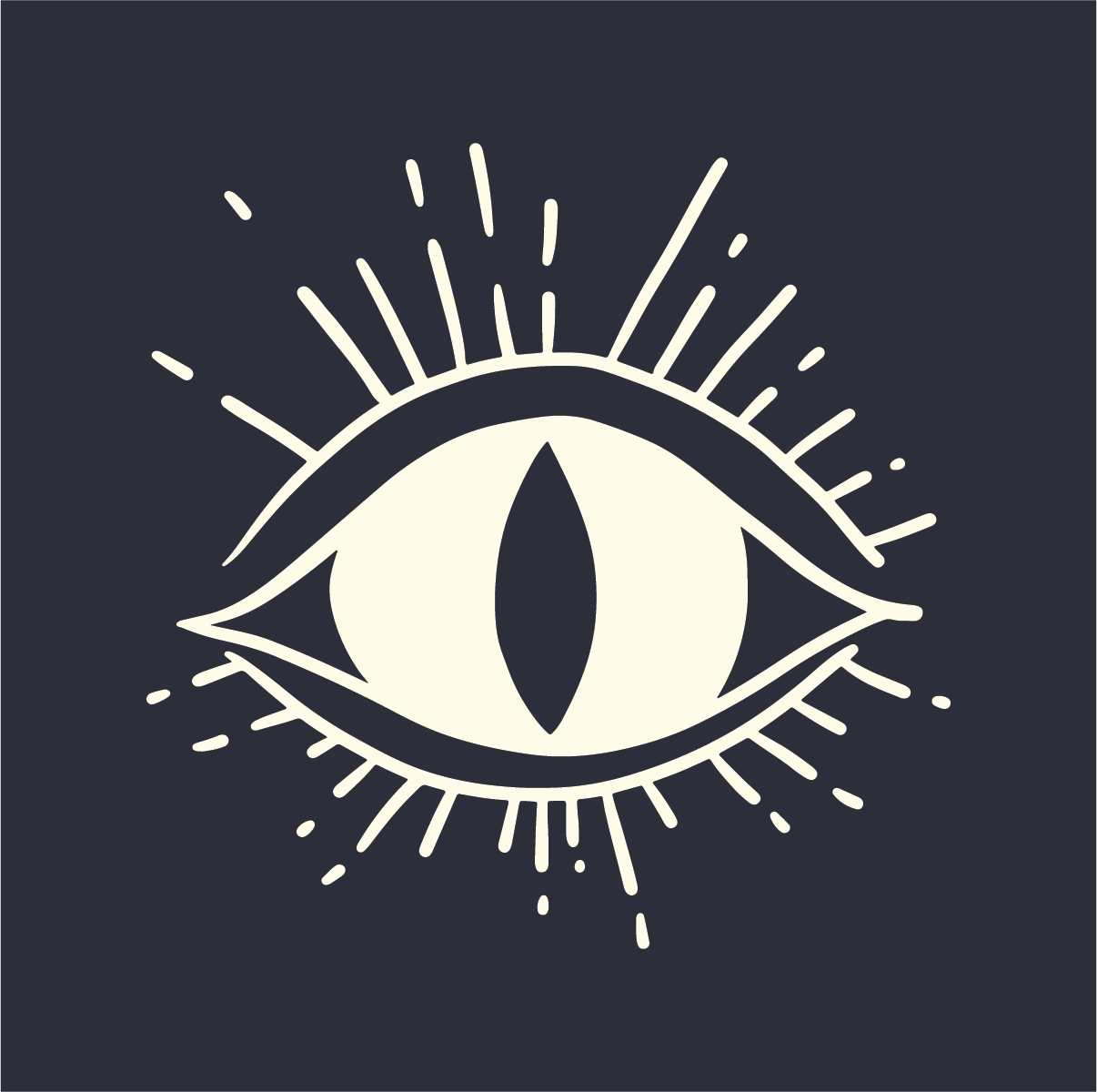
A Few Favorite Cards, Explained
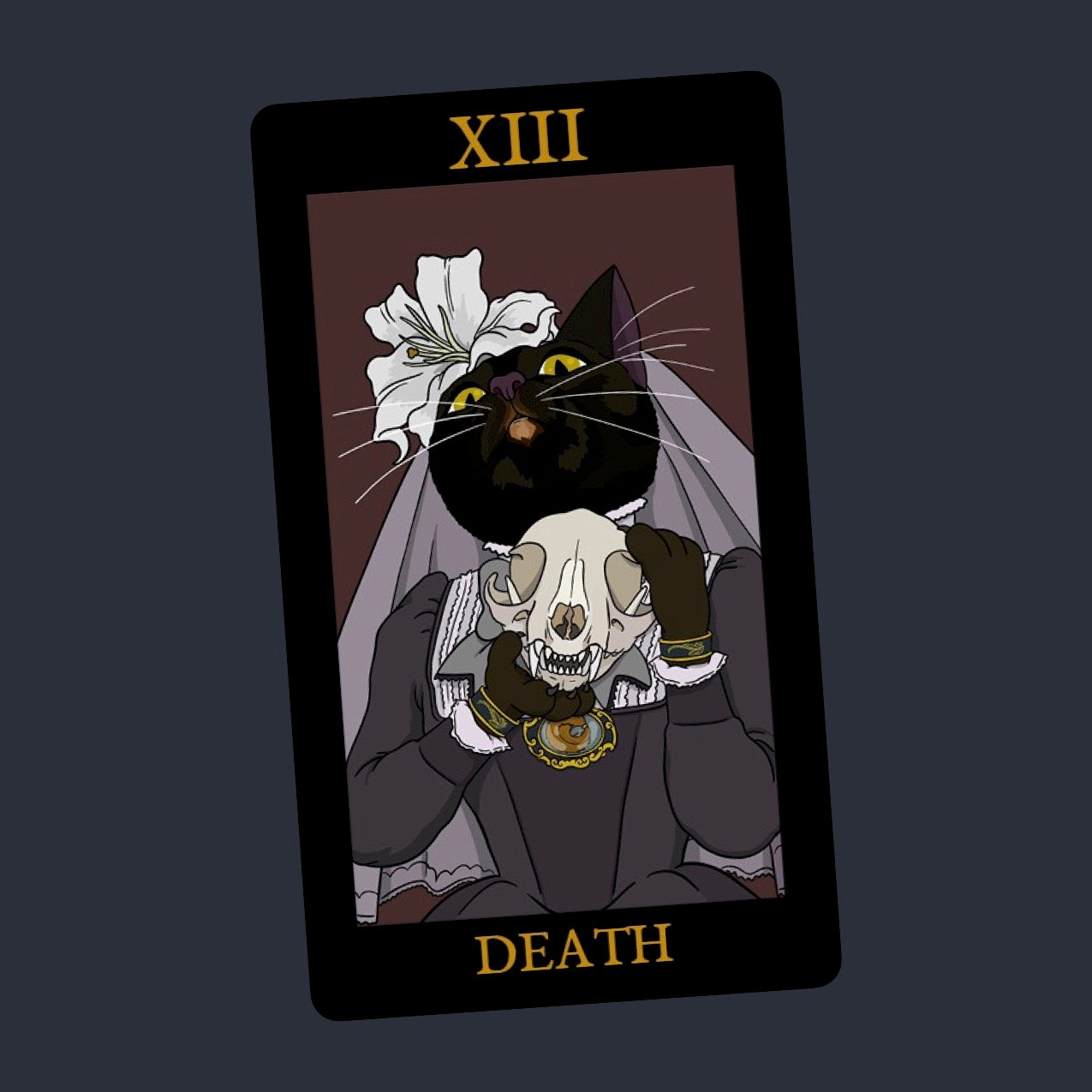
XIII
Death
Death was the first card I designed, and it set the tone for the rest of the deck. At the time, I wasn't thinking about a full deck; I was just making a design for Halloween. I was inspired by the almost cultish obsession Victorians had for the departed, particularly in their mourning attire and jewelry. We're all familiar with the black dresses worn to signal recent bereavement, but Victorians also made jewelry out of body parts. Yes, locks of hair set in broaches and rings, but also truly macabre pieces like brooches and rings set with your loved one's teeth. The three pieces of jewelry worn by the Death cat are based on real pieces from the Victorian era. The skull she holds is a cat skull. The white lily is a flower of mourning. Since I hadn't yet decided to make a full deck, her dress is slightly more inspired by modern Lolita fashion than authentic Victorian.
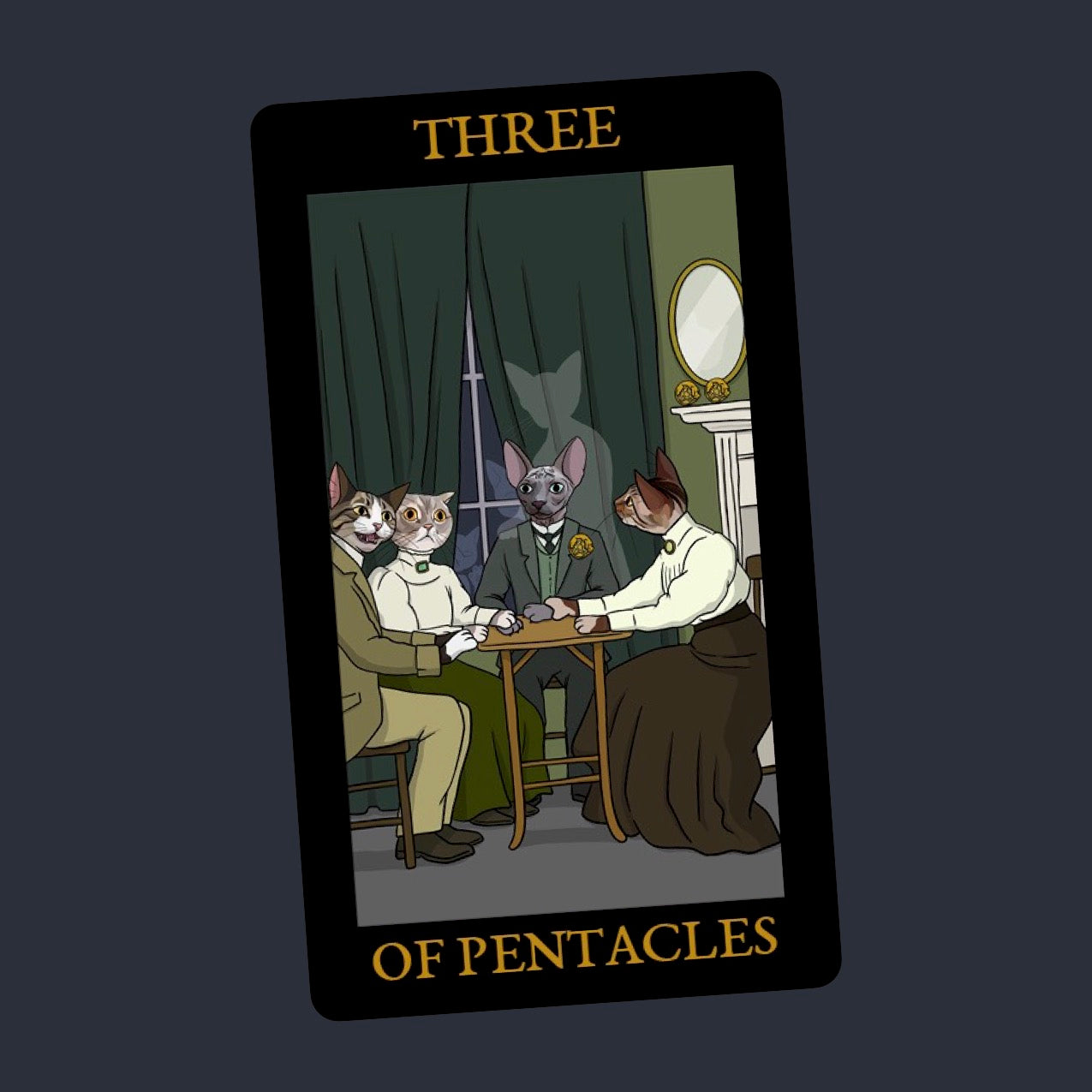
Three of Pentacles
Another aspect of the Victorians' death fixation was the rise of Spiritualism, a belief that spirits can be contacted and communicated with. Once I started work on designing an entire deck, I knew I wanted one of the cards to depict a seance. The Three of Pentacles, with its meaning of teamwork and joining together for a common goal (in this case, contacting the dead), seemed like a good fit. As a young woman, my grandmother conducted many seances with her friends, and so I always associate this card with her stories.
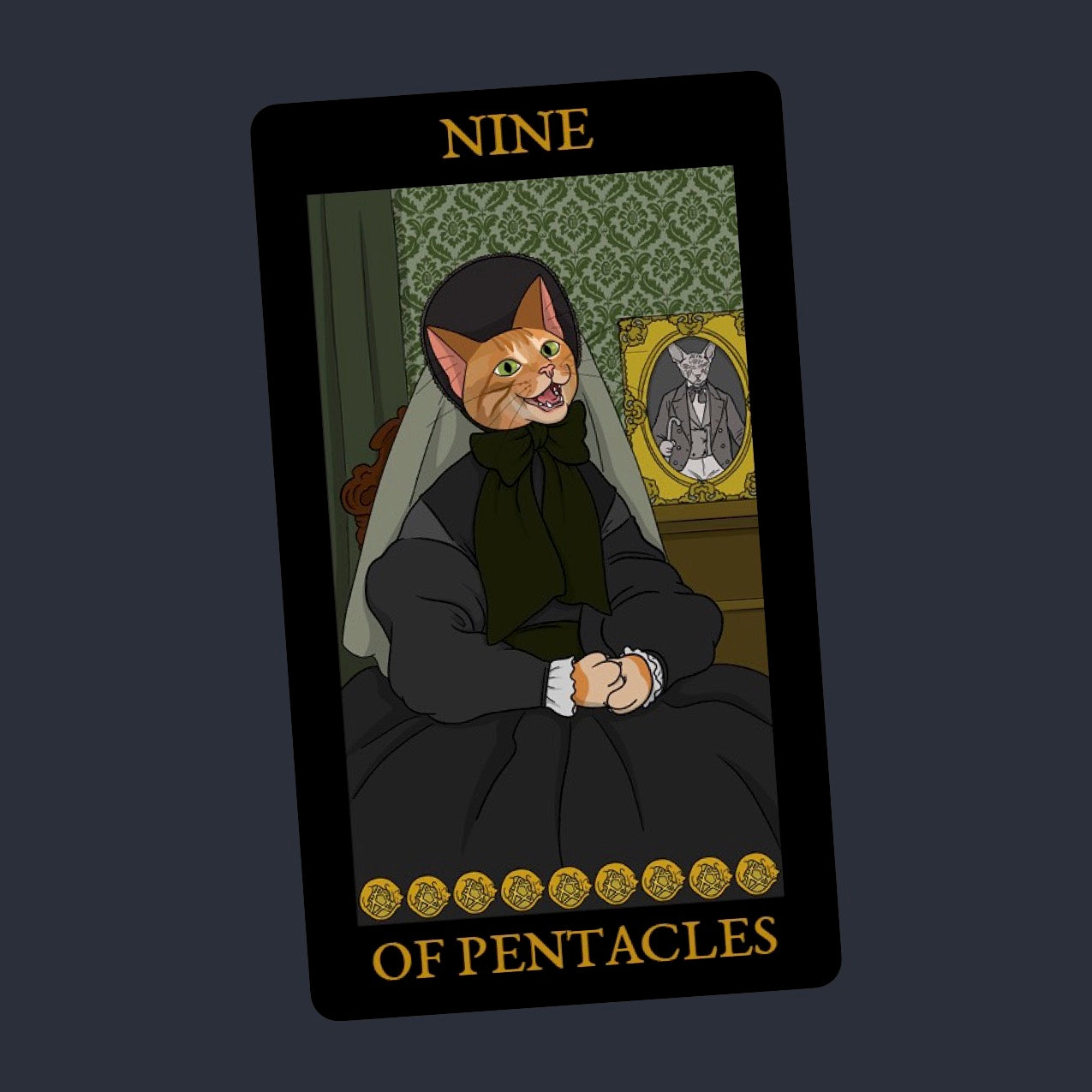
Nine of Pentacles
Another card that depicts Victorian mourning is the nine of pentacles, but it makes a very different statement. It's also one of the cards I point to when asked what I mean by "darkly humorous." This card's meanings revolve around independence, material security, and self-sufficiency. When pondering how to depict that in the Victorian era, what kept leaping to mind was that the best way to obtain those things as a woman at the time was to inherit them. But if you inherited from a parent or other family member, then you were expected to marry, which would give your husband control of your money. So, inheriting money from a spouse was how a woman might have her status as a married woman and her financial independence. Many marriages were business transactions. This card shows a young widow, finally free, with a photograph of her elderly and grumpy-looking late husband behind her.
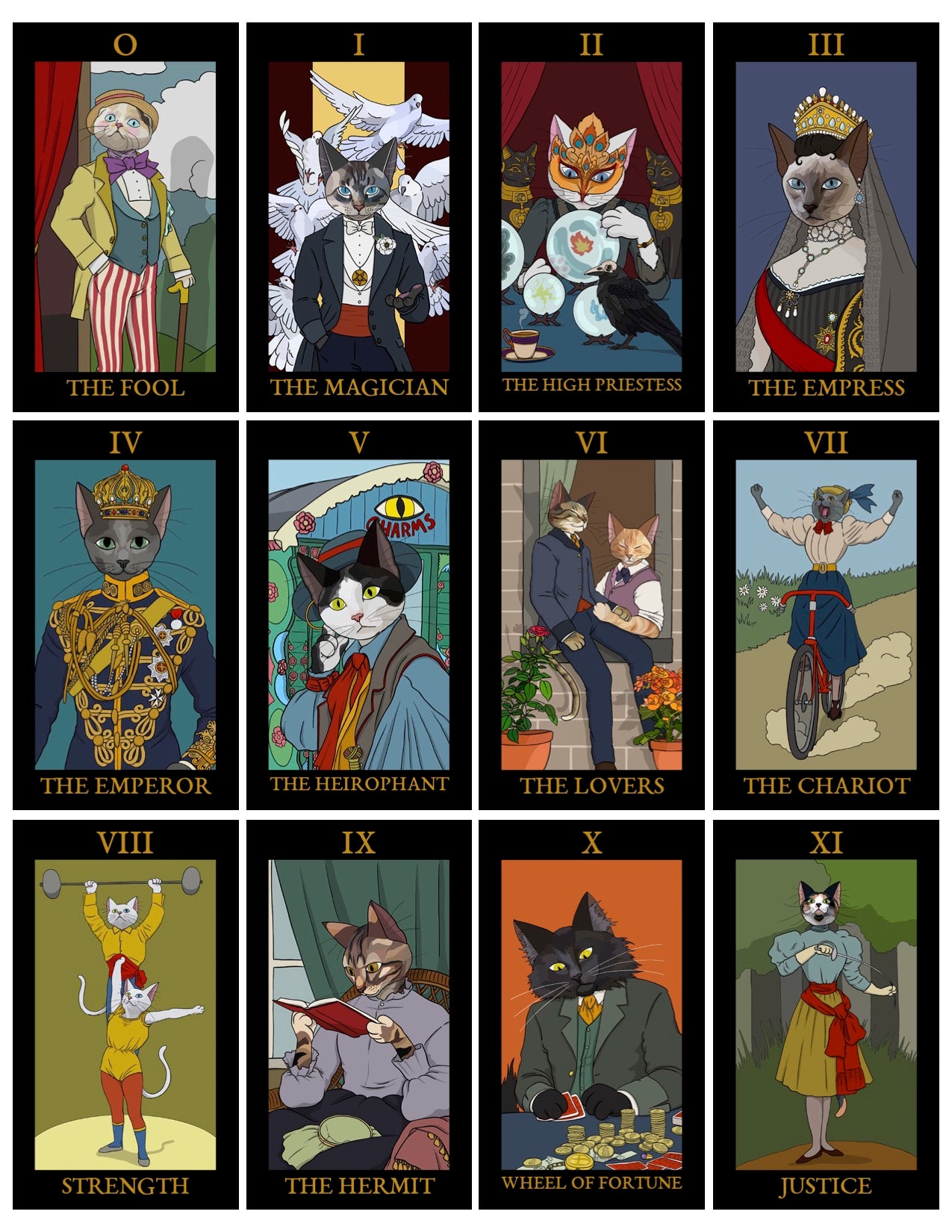
Love the Art Work?
You can order a print of any of the cards' art. Available in four sizes.
